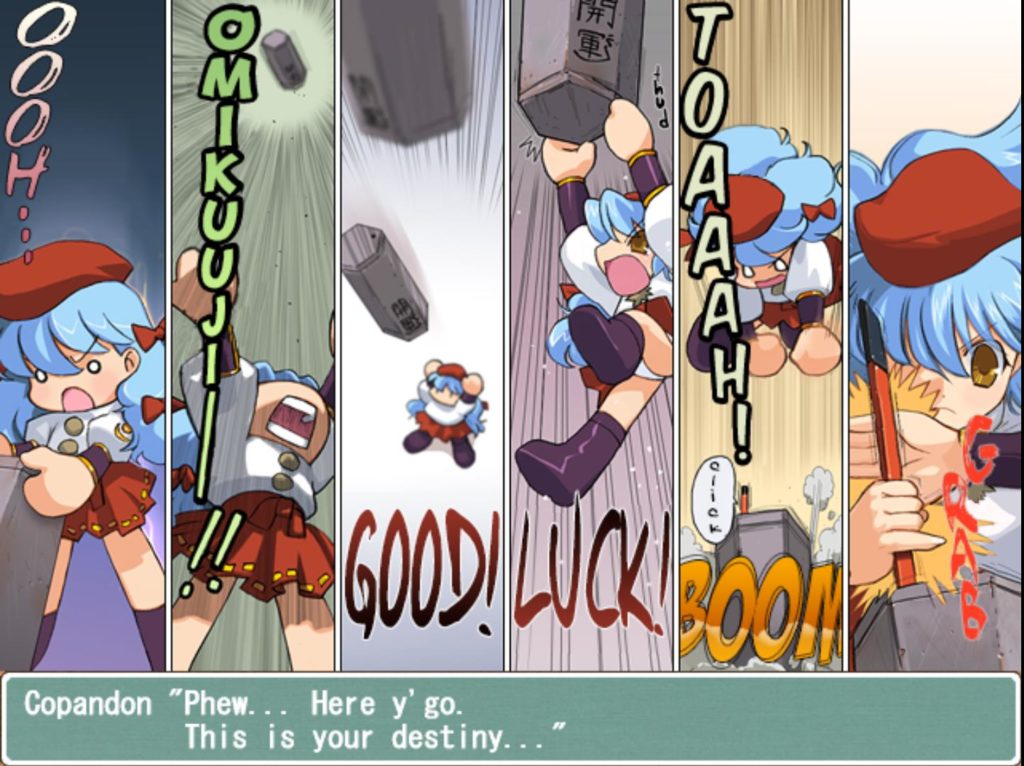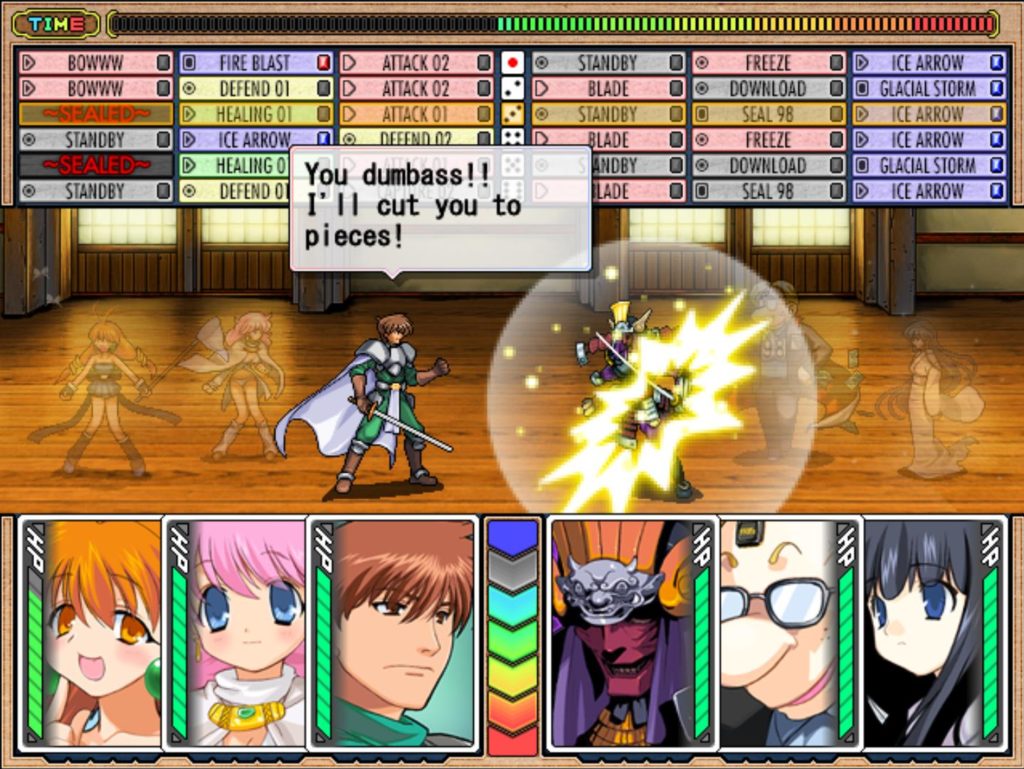The History of Lewd: Rance 5D – The Lonely Girl
We’ve previously taken a high-level look at the Rance series as a whole, but it’s high time we started looking at specifics. And as good a place to start as any is with 2002’s Rance 5D: The Lonely Girl, the first entry in this sprawling series that was officially localised, thanks to a collaboration between developer Alicesoft and western publisher MangaGamer that finally came to fruition in 2017.
Why was the fifth numbered game in the series the first to be localised, rather than starting at the beginning? Simple; Rance 5D was intended as something of a “soft reboot” for the series, and thus is an excellent jumping-on point for newcomers. It’s also a little less obviously dated than its immediate predecessors, thus making it a little more palatable to modern audiences from a gameplay perspective.
It’s also weird. In the best way.

Rance 5D’s unusual moniker stems from a tough time in Alicesoft’s history. The company started and failed to complete a fifth installment in their flagship series on three separate occasions, meaning that they were losing money and motivation. Eventually, they gave up on the sieres temporarily and decided to try something completely new; the result was Daiakuji, a conquest-style strategy game similar to the well-received (but non-canonical) Kichikuou Rance that was set in a parallel universe in which a feminist-dominated America won World War II and quickly brought Japan under its heel.
Daiakuji ended up being a huge success — though we’re yet to see an official localisation — and this inspired Alicesoft to have another crack at a fifth Rance game. This time, however, they would keep the scale small and manageable.
“If it was small, maybe it would work,” lead developer TADA explains in Rance 5D’s developer commentary section, Alice’s Mansion. “We didn’t have the willpower or the material to put into an ambitious RPG any more. We’d had three tries already… three tries had been buried in the darkness of the past. But if it was a stupid little game… we decided to make it with the smallest possible number of staff. And we somehow managed to complete it. Phew!”

Thus, Rance 5D’s “D” suffix came about because it was the fourth attempt at a fifth Rance game — with A, B and C all being “buried in the darkness of the past”, as TADA put it. Its small scale provided a great opportunity for Alicesoft to introduce protagonist Rance and his perpetual companion (technically slave, but by the time 5D rolls around we’re well past that) Sill Plain to a new audience for the first time rather than advancing their arcs significantly — and from there, the company was able to build up its confidence and get significantly more ambitious with subsequent installments. But that’s a tale for another time.
Rance 5D’s self-professed “stupid little game” concept is a peculiar one: it’s described as a “roulette RPG”. What this means is that there’s a significant amount of randomness and luck involved in the game — but rather than simply being random for the sake of being random, it’s a video game based around the conventions of tabletop gaming.
“5D’s a dice game,” explains TADA. “Or rather, a game where everything is left to random numbers. You can make slight adjustments, but it’s really based on luck. ‘Rolling dice… Doubles! Alright! I never thought I’d win, but I did…’ That’s the kind of feeling I wanted to produce.”

TADA’s aim was to produce a game that eschewed linearity and “balance” in favour of an experience that varied somewhat for everyone who played it. To that end, the majority of the game unfolds via the use of a coloured roulette-style wheel, with different colours representing different types of encounter. Green orbs provide story-advancing events; yellow orbs present you with treasure; orange orbs throw you into combat, and so on.
It’s not entirely down to luck, either; much as in chance-based tabletop games, there are ways in which you can influence the result of the roulette wheel. Firstly and most simply, there are three different types of spin you can use: a normal spin is self-explanatory, while slow and cautious spins allow you to choose from a range of possible results rather than simply taking what you are given.
There are pros and cons to both approaches, of course. Going for the pure gamble that is a normal spin makes it more likely that subsequent spins will advance the story, and getting three of the same colour in a row via normal spins results in something special happening. Having three monster encounters from normal spins one after the other rewards you with a confrontation against the experience piñata monsters known as “Can Can”, for example.

On the flip side, while the slow and cautious spins allow you more control over what happens, they also take more away from the time limit you have to complete each chapter; since you’ll need at least some of that time just to get through the story events for each chapter, you thus cannot rely exclusively on the more “careful” spins if you want to succeed, particularly later in the game.
Once you’re into an encounter as a result of your roulette spin, several “cards” are laid on the table, representing Rance and his party members, the location in which they are, and any other characters who are present. At this point, you can take actions by clicking on any of the cards — searching the location takes a simple click of the location card, for example, while clicking Rance’s party members allows you to use their own specialist abilities in some way.
Many actions you take result in a tabletop RPG-style “check” expressed as a dice roll; in order to succeed at what you’re attempting to do, you’ll need to score a particular number of successes. As you might expect, different characters are good and bad at different things, so it pays to pick the right party member for the right job.

Likewise, battles unfold entirely through virtual dice rolls — interestingly, one dice roll determines the actions of everyone on the battlefield for a whole round of combat, so rearranging the abilities you have assigned to each possible result is worth your while, particularly if you’re consistently struggling to deal with a particular monster’s abilities.
Although there’s only really one “right” solution to each problem you’re faced with, Rance 5D does encourage experimentation with a generous autosave and checkpoint system — and some of the ways in which things can go horribly, horribly wrong are very amusing indeed. That said, you can also beat Rance 5D at its own game if you really think about things like a tabletop min-maxer — even the game’s final boss can be taken down in a single hit with the appropriate preparation!
As most people know by this point, our protagonist Rance is not exactly a “hero” in the traditional sense — neither is he one by the rather more specific definition established in the series’ frighteningly deep lore, for that matter. Consequently, he gets up to a variety of morally questionable things over the course of the game — up to and including the sexual assault for which he is, for better or worse, best-known by people not well-versed in the series.

It’s worth noting, though, that Rance is at no point presented as a desirable sort of role model whose lead should be followed. He’s obnoxious, he’s rude, he’s arrogant — and one can only wonder if Sill’s apparent motherly adoration of him is down to Stockholm syndrome or genuine affection. She at least tries to hold him back from his absolute worst impulses, though; sometimes she even succeeds.
At the same time, Rance’s more obnoxious characteristics make for some interesting character development and narrative moments. For example, over the course of both Rance 5D and its immediate sequel Rance VI: Collapse of Zeth, Rance develops a genuine bond with Rizna, the titular Lonely Girl of this installment — and a significant part of her character development comes from her feelings about and attitude towards sexuality.
Likewise, the character Copandon is in search of a “guy with great luck”, and is obviously somewhat hesitant to believe that Rance might be who she’s looking for, given… well, everything about him, really. However, at the same time, it’s a fact that in order to beat Rance 5D, you yourself will need to be someone with great luck and thus be immensely appealing to Copandon — though both you as the player, like Rance, most certainly should not be above manipulating the odds in your favour whenever the opportunity presents itself. And there are plenty of opportunities to do so.

One thing that will quickly become apparent about Rance 5D almost as soon as you start playing is that although the series is best-known for being 18+ eroge with a lot of non-consensual sexual scenes, the core appeal of it is actually in its witty writing, its deep lore and its exceedingly memorable characters.
No-one, not even Rance, is a one-note character — nor is anyone infallibly perfect, for that matter — and by the end of the game you’ll have come to regard everyone, even our brutish protagonist, with a certain amount of affection. And you’ll more than likely be keen to spend some more time in their company.
Thankfully, there’s plenty of opportunity to do just that; at the time of writing, you can officially enjoy the further adventures of Rance in English via the aforementioned Rance VI: Collapse of Zeth, Sengoku Rance and Rance Quest Magnum, or you can go back to where it all began with the official remakes of Rance 01 and 02.
For those new to the series, Rance 5D is a great place to start; for series veterans, it’s a delightfully light-hearted romp that acts as a great palate-cleanser between his more substantial adventures.
Rance 5D is available in a double-pack with Rance VI: Collapse of Zeth from MangaGamer. There’s also a Deluxe hardcopy version available, which includes a soundtrack CD.Note that these links are, of course, thoroughly NSFW!
Join The Discussion
Rice Digital Discord
Rice Digital Twitter
Rice Digital Facebook
Or write us a letter for the Rice Digital Friday Letters Page by clicking here!
Disclosure: Some links in this article may be affiliate links, which means we may earn a small commission if you make a purchase after clicking on them. This is at no additional cost to you and helps support Rice Digital!
- Letter from the Editor: passing the torch - June 30, 2023
- Super Woden GP 2 is looking promising - June 30, 2023
- Inti Creates is making a 32 bit-style Love Live action platformer - June 26, 2023







